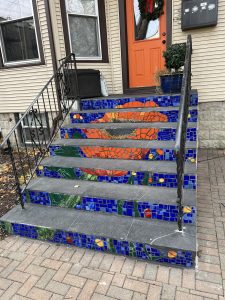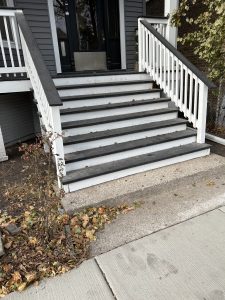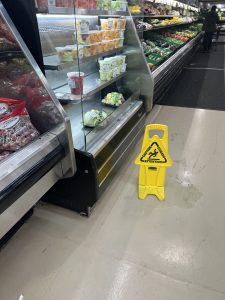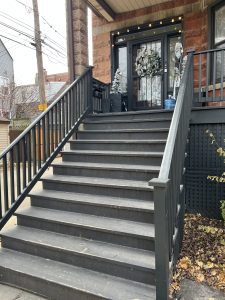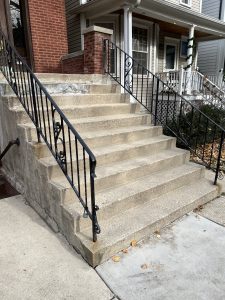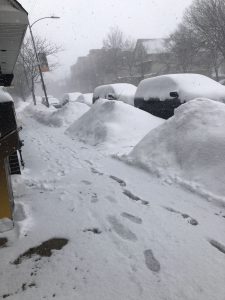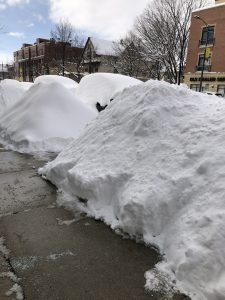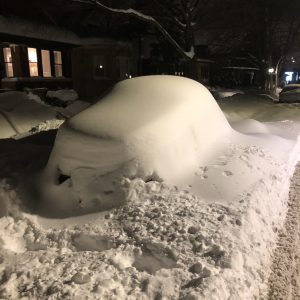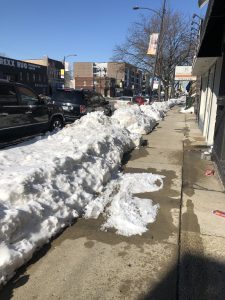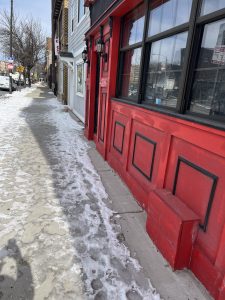
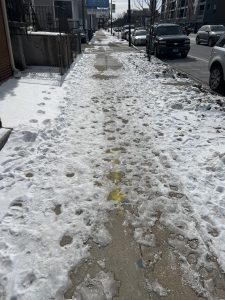
Written and reviewed by Peter Zneimer, Zneimer & Zneimer P.C.
You go to Jimmy’s Market to buy some groceries at 3:00 pm in the afternoon. That morning it had snowed 5 inches and then began to melt. You park your car and when you near the entrance of the store you slip on ice and snow on the walk way that had not been cleared and fall on the ground and break your arm. Jimmy’s Market had a contract with Frank’s Snow Removal company to promptly clear ice and snow for Jimmy’s Market after any snow storm. Frank’s Snow Removal Service failed to show up that day to remove the snow. Under these facts, is there any possible liability against Jimmy’s Market and/or Frank’s Snow Removal Service? This is a common fact pattern that the personal injury lawyers of Zneimer & Zneimer P.C. encounter.
Under the “natural accumulation rule” in Illinois, property owners have no duty to remove natural accumulations of snow and ice from their property. The rational is that since winters in Chicago can be harsh, especially in Chicago, imposing a duty on property owners to remove natural accumulations of of snow and ice would be unreasonable and unpractical. To win a slip-and-fall case involving ice or snow, the plaintiff typically must show that (1) the accumulation of snow and ice was unnatural and (2) the defendant had actual or constructive notice of the condition.
 Chicago Accident Lawyer Blog
Chicago Accident Lawyer Blog


